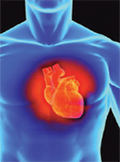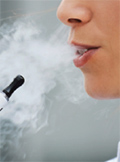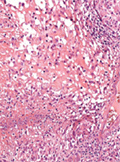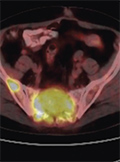The eLitMed.hu medical portal uses computer cookies for convenient operation. Detailed information can be found in the Cookie-policy.
Lege Artis Medicinae - 2016;26(03)
Content
[The value of the SCOFF questionnaire in the screening of eating disorders]
[Having become an increasingly relevant health issue from the second half of the 20th century, eating disorders have presented the need for screening, carried out in the simplest possible way, by a short questionnaire. Morgan and his colleagues identified this necessity and in 1999 created the SCOFF test to screen eating disorders with five yes or no questions. The questionnaire promptly became popular due to its briefness and easy adaptability. It was translated into several languages, its validity was measured on numerous populations. According to the results SCOFF is suitable for primary screening of eating disorders with a non-diagnostic purpose, taken two “yes” answers out of five as the critical margin, specified by the authors. Our objective was to give a review of the history of the SCOFF questionnaire.]
[Clinical trials for evaluating cardiovascular safety of SGLT-2- inhibitor drugs in patients with type 2 diabetes]
[SGLT-2-inihibitors are considered as a new class among oral antidiabetic drugs. The first derivatives of this class became available in the last couple of years in Hungary. According to the requirements from regulatory bodies, randomized, controlled clinical trials have been initiated in order to evaluate the cardiovascular safety of nearly all new antidiabetic drugs in patients with type 2 diabetes. Among SGLT-2-inhibitors, only one trial with empagliflozine has been completed so far. Based on the endpoints of the EMPA-REG OUTCOME trial a significant decrease in different cardiovascular events and total mortality was observed in type 2 diabetic patients with elevated cardiovascular risk. The exact pathomechanism of this beneficial effect has not been clearly understood. Currently, the position statements and scientific guidelines clearly describe the place of SGLT-2-inhibitor drugs in the treatment algorithm; the beneficial effect of empagliflozine on cardiovascular events should seriously be considered when making therapeutic decision. Together with the results of ongoing studies with SGLT-2-inhibitors (dapagliflozine: DECLARE, canagliflozine: CANVAS), these data will provide a more robust evidence about the cardiovascular safety of this new class of oral antidiabetic drugs. ]
[Possibilites of modern, evidence based prevention of recurrent cystitis]
[Recurrent cystitis is a very common disease in women; every second women experiences at least one episode of acute cystitis during their lifetime, and in 20% of the cases it develops to recurrent cystitis. The disease also has a significant negative impact on quality of life. In 60% percent of the cases mild-severe depression can be shown, which can be reduced by 30-40% with the properly chosen prophylaxis. Therefore the up-to-date knowledge of the evidence based recommendations on disease management is mandatory to all clinicans dealing with this patient group. In case of a recurrent urinary tract infection treatment of the actual episode is not enough. Rather, emphasis has to be placed on appropriate prevention strategy. Alway non-antimicrobial methods has to be preferred as first choice, antibiotic prophylaxis should be considered only when the non-antimicrobials have been unsuccessful. In this review the authors summarise the evidence based management options of recurrent urinary tract infections in detail, based on the guideline recommendations of the European Association of Urology. ]
[Electronic cigarette use among students in higher education]
[INTRODUCTION - Advantages and disadvantages of electronic cigarette (e-cigarettes) use with increasing popularity among young adults generated continuous debates both nationally and internationally. The aim of our study was to assess the prevalence of e-cigarette use in this population, and to explore sociodemographic, smoking-related and general health behavior predictors of its ever use. METHODS - Our cross-sectional study with anonymous, self-administered questionnaire was conducted among college/ university students (n=889) during a summer festival. Additionally to descriptive analyses, multivariate logistic regression model was applied (p<0.05) to identify factors predicting the initiation of e-cigarette use. RESULTS - One-third of our population has ever tried e-cigarettes, mostly daily smokers, but almost 15% of never smokers also tried it. In total, current use of e-cigarettes was only 1.2%. Odds ratios (ORs) of trying e-cigarettes were higher among daily smokers (OR=3.28) ever smokers (OR=2.10), males (OR=1.88) and those who did not care consciously for their health (OR= 1.65). CONCLUSIONS - Our sample in a recreational environment showed higher rates of ever use of e-cigarette however, current use proved to be lower if compared with previous international studies. Our results may provide basic information in this topic to further national and international surveys.]
[Experiences with rosuvastatine therapy]
[A relative cardiovascular risk reduction of 25-35% has been reported in patients with high cardiovascular risk that have started statins directly after the cardiovascular events. A lot of patients fail to consistently take these medications as directed. In order to obtain further success, it is very important to improve the actual routine, especially because in the field of lipid-lowering we have new data and guidelines that strongly support our efforts in the right direction. We report the results of our ten patients treated with rosuvastatin after myocardial infarction from our ALADDIN Study. In the period of six month of treatment with 40 mg rosuvastatin LDL-cholesterol decreased 55% (from 3.55±1.1 to 1.58±0.6 mmol/l, p<0.01), non-HDL-cholesterol decreased 52% (from 4.15±1.23 to 2.0±0.8 mmol/l, p<0.01), triglycerides -26% (from 1.63± 0.41 to 1.2±0.4 mmol/l) and hsCRP level decreased 61% (from 5.47±3.8 to 2.1±1.0 mg/l, p<0.01). The two years persistence in these patients were 100%. Our experience confirms that the daily use of a highly-efficient statin (rosuvastatin) has a beneficial effect on lipid parameters and also facilitates the attainment of target lipid levels and significant cardiovascular risk reduction. ]
[Tuberculous meningoencephalitis in a toddler child]
[INTRODUCTION - Central nervous system complications occur in 1% of patients with Mycobacterium tuberculosis infection, but the mortality is very high, about 50 percent. CASE REPORT - A 1-year-old child in tenebrous condition was admitted to the hospital with suspicion of meningitis. MRI detected disseminated encephalitis and dilated ventricles. Examination of the serum and cerebrospinal fluid didn’t bring any results. The microscopic examination of the brain biopsy raised the possibility of tuberculous meningoencephalitis, and the culture and PCR from the brain tissue revealed meningoencephalitis caused by Mycobacterium tuberculosis Beijing. DISCUSSION - Tuberculous meningitis is a very rare, but severe consequence of extrapulmonary tuberculosis. Due to the high mortality, early diagnosis and whenever suspected, the use of empiric antituberculotic therapy are the only chances of recovery.]
1.
Clinical Neuroscience
[Headache registry in Szeged: Experiences regarding to migraine patients]2.
Clinical Neuroscience
[The new target population of stroke awareness campaign: Kindergarten students ]3.
Clinical Neuroscience
Is there any difference in mortality rates of atrial fibrillation detected before or after ischemic stroke?4.
Clinical Neuroscience
Factors influencing the level of stigma in Parkinson’s disease in western Turkey5.
Clinical Neuroscience
[The effects of demographic and clinical factors on the severity of poststroke aphasia]1.
2.
Clinical Oncology
[Pancreatic cancer: ESMO Clinical Practice Guideline for diagnosis, treatment and follow-up]3.
Clinical Oncology
[Pharmacovigilance landscape – Lessons from the past and opportunities for future]4.
5.

















